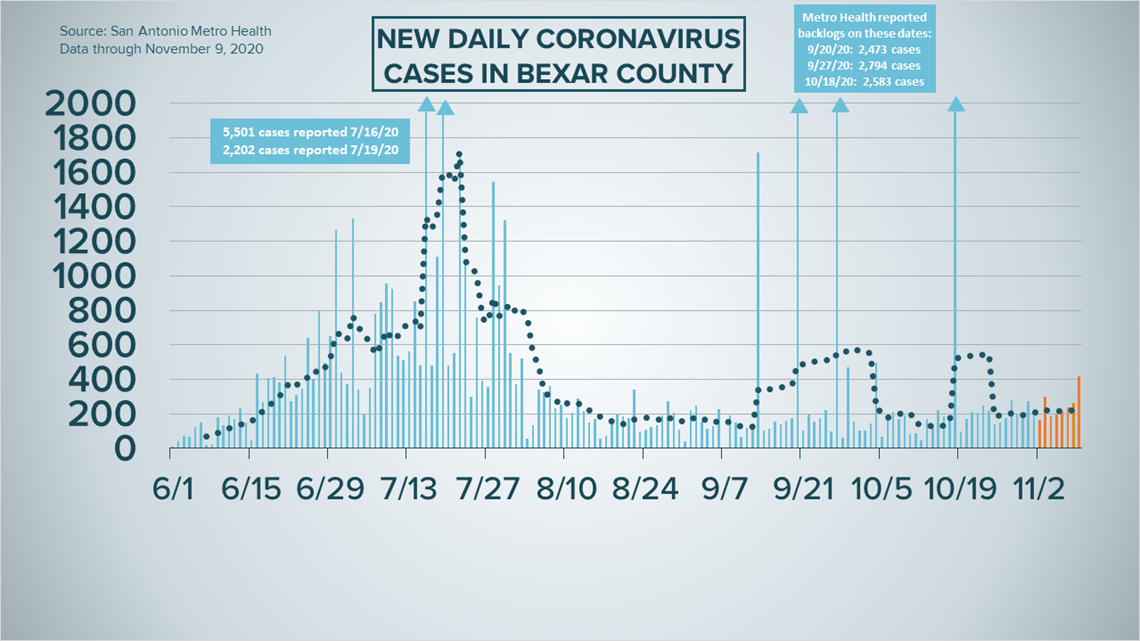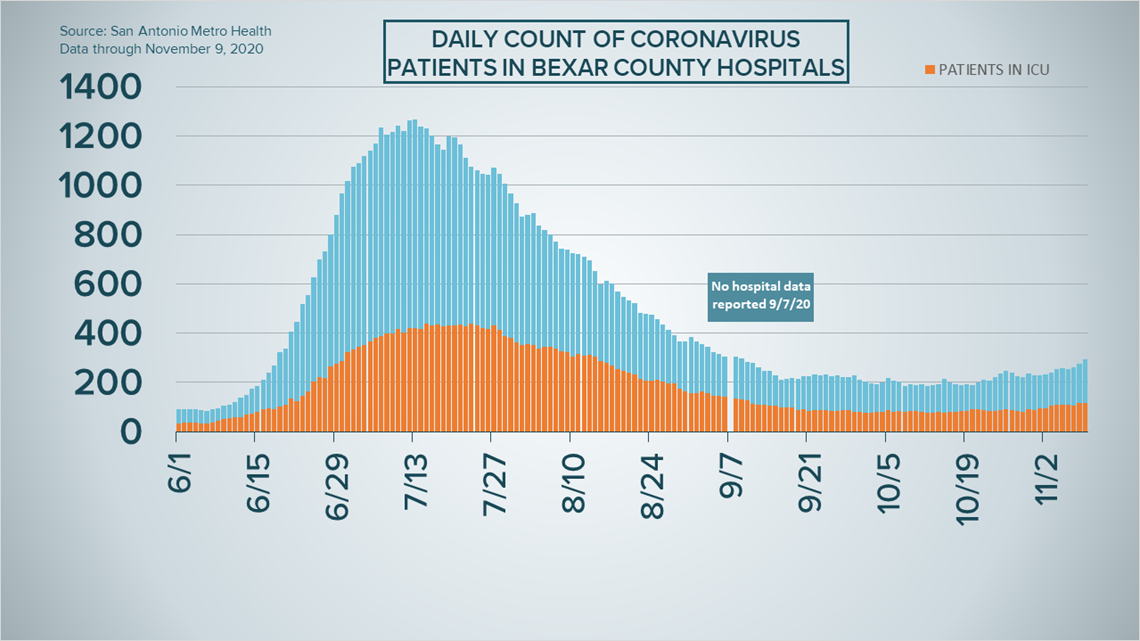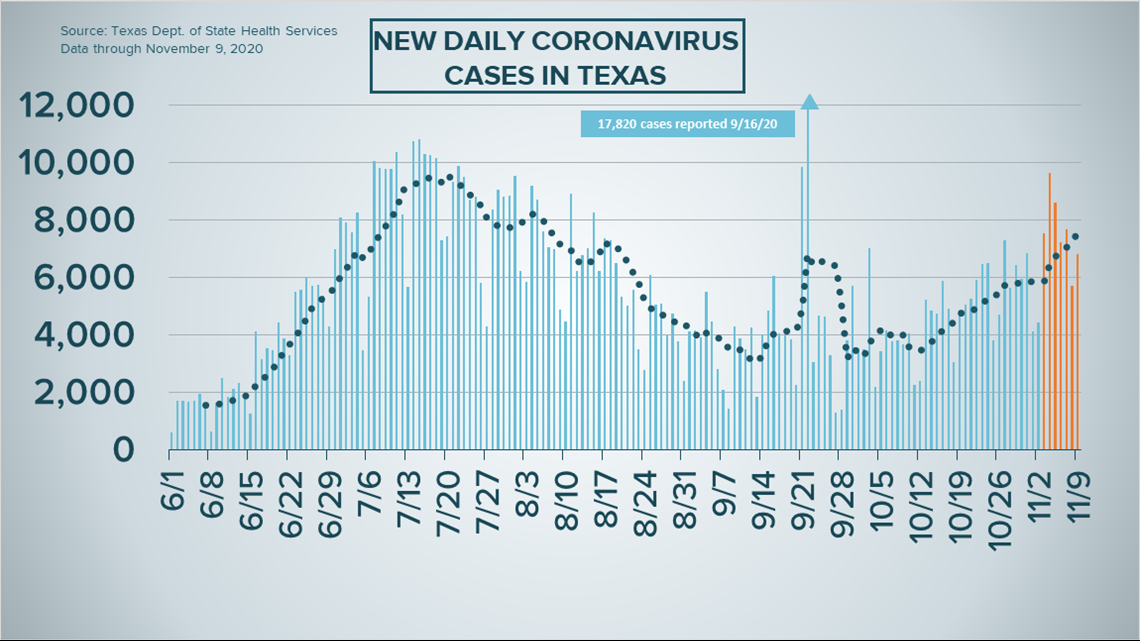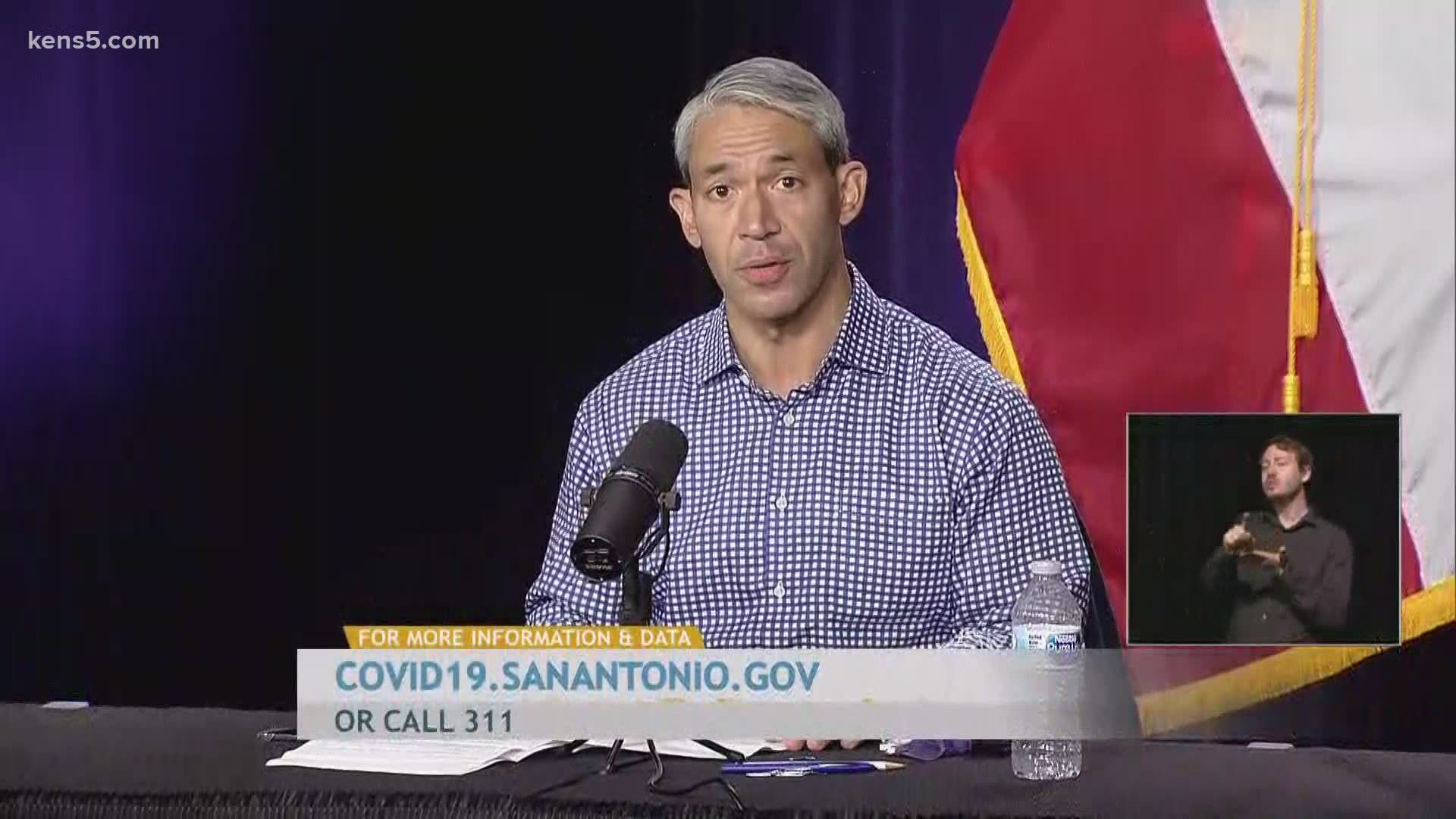SAN ANTONIO — We're tracking the latest numbers from the coronavirus pandemic in San Antonio and across Texas. Here are the latest numbers reported by Bexar and surrounding counties:
- Bexar County: 417 new cases were reported Monday, bringing the total number of cases for the county to 68,044. No new deaths were reported; the death toll remains at 1,285.
- Comal County: The county reported 16 new COVID-19 cases Monday in addition to 7 backlogged cases that were added to county data. No new virus-related deaths were reported. There have been a total of 3,941 reported cases of COVID-19 in the county – including 2,928 lab-confirmed cases – while 122 county residents have died. County officials say there are 185 active coronavirus cases, and 3,634 residents are considered recovered.
- Hays County: Officials in Hays County on Monday reported 82 new cases in the county and no additional virus-related deaths. As of Monday, there are a total of 6,413 lab-confirmed cases in the county (405 of which are active), while the death toll remained at 91. 5,917 residents have recovered from the virus.
How Bexar County is trending
We've tracked how many coronavirus cases have been confirmed in Bexar County from the time officials began reporting cases in March 2020. The graphic below shows the number of cases since June and charts those daily case numbers along a 7-day moving average to provide a more accurate picture of the overall coronavirus case curve in our area and the direction we're trending amid the pandemic.
On Monday, San Antonio Mayor Ron Nirenberg reported 417 new coronavirus cases in Bexar County. At least 68,044 county residents have been diagnosed with COVID-19 during the pandemic.
No new local deaths were reported; the Bexar County death toll from coronavirus complications remains at 1,285.


Hospitalizations in the county continued to rise on Monday, with 294 COVID-19 patients receiving treatment at local facilities. That's 20 more overall from Sunday. There are currently 56 patients on ventilators and 118 in intensive care.


It's unclear how many of those patients are from El Paso, a region that has been particularly devastated by the virus in recent weeks. On Friday, local leaders said that 46 of 253 patients were from the west Texas city.
Monday saw the county's COVID-19 risk level remain in the moderate zone; Nirenberg noted that the positivity rate had risen to 8.7%
Coronavirus in Texas
The number of Texans who have tested positive for the coronavirus since the pandemic began grew by 6,785 on Monday, according to the Texas Department of State Health Services.
3,816 of those are new diagnoses over the last 24 hours, while another 2,969 cases stem from a number of backlogs in several counties. More details can be found at the top of this page.
As of Monday, at least 963,019 Texans have contracted COVID-19.


State health authorities also reported 26 additional virus-related deaths on Monday. At least 18,769 Texans have passed away from COVID-19 complications.
Meanwhile, the overall number of Texans hospitalized for COVID-19 on Monday rose slightly by 23 in the past 24 hours. A total of 6,103 Texas residents are currently receiving COVID-19 treatment in state hospitals. The beginning of November has continued a troubling trend reflecting a resurgence of COVID-19 spread in the Lone Star State that began last month; since Oct. 1, the number of Texas hospitalizations has spiked by 91.3%.
Experts attribute the recent spike in COVID-19 numbers to "pandemic fatigue."
The state estimates that 820,156 Texans have recovered, while 126,412 Texans remain ill with COVID-19.
Meanwhile, the latest update from the Texas Education Agency showed that there have been 31,987 cumulative cases among staff and students across the state through Nov. 1. More information can be found here.
The TEA releases new data on school cases every Thursday.
Latest Coronavirus Headlines
- Pfizer touts coronavirus vaccine that looks to be 90% effective. What happens next?
- Stocks rally worldwide with hopes for a return to 'normal'
- Tennessee tiger tests positive for COVID-19; two others presumed infected
- Austin patients part of Pfizer COVID-19 vaccine trial that is 'showing effectiveness'
- US surpasses 10 million confirmed coronavirus cases
- Texas A&M suspends in-person football activities due to COVID-19
- President-elect Biden urges everyone to wear masks to combat COVID-19
- Ben Carson tests positive for COVID-19
- Tips for safely celebrating Thanksgiving amid COVID-19 pandemic
Coronavirus symptoms
The symptoms of coronavirus can be similar to the flu or a bad cold. Symptoms include fever or chills, cough, shortness of breath or difficulty breathing, fatigue, muscle or body aches, headache, new loss of taste or smell sore throat, congestion or runny nose, nausea or vomiting and diarrhea, according to the Centers for Disease Control.
Most healthy people will have mild symptoms. A study of more than 72,000 patients by the Centers for Disease Control in China showed 80 percent of the cases there were mild.
But infections can cause pneumonia, severe acute respiratory syndrome, kidney failure, and even death, according to the World Health Organization. Older people with underlying health conditions are most at risk.
But infections can cause pneumonia, severe acute respiratory syndrome, kidney failure, and even death, according to the World Health Organization. Older people with underlying health conditions are most at risk.
Experts determined there was consistent evidence these conditions increase a person's risk, regardless of age:
- Chronic kidney disease
- COPD (chronic obstructive pulmonary disease)
- Obesity (BMI of 30 or higher)
- Immunocompromised state (weakened immune system) from solid organ transplant
- Serious heart conditions, such as heart failure, coronary artery disease, or cardiomyopathies
- Sickle cell disease
- Type 2 diabetes
The CDC believes symptoms may appear anywhere from two to 14 days after being exposed.
Human coronaviruses are usually spread...
- Between people who are in close contact with one another (within about 6 feet).
- Through respiratory droplets produced when an infected person coughs, sneezes or talks. These droplets can land in the mouths or noses of people who are nearby or possibly be inhaled into the lungs.
- Some recent studies have suggested that COVID-19 may be spread by people who are not showing symptoms.
Help stop the spread of coronavirus
- Stay home when you are sick.
- Eat and sleep separately from your family members
- Use different utensils and dishes
- Cover your cough or sneeze with your arm, not your hand.
- If you use a tissue, throw it in the trash.

